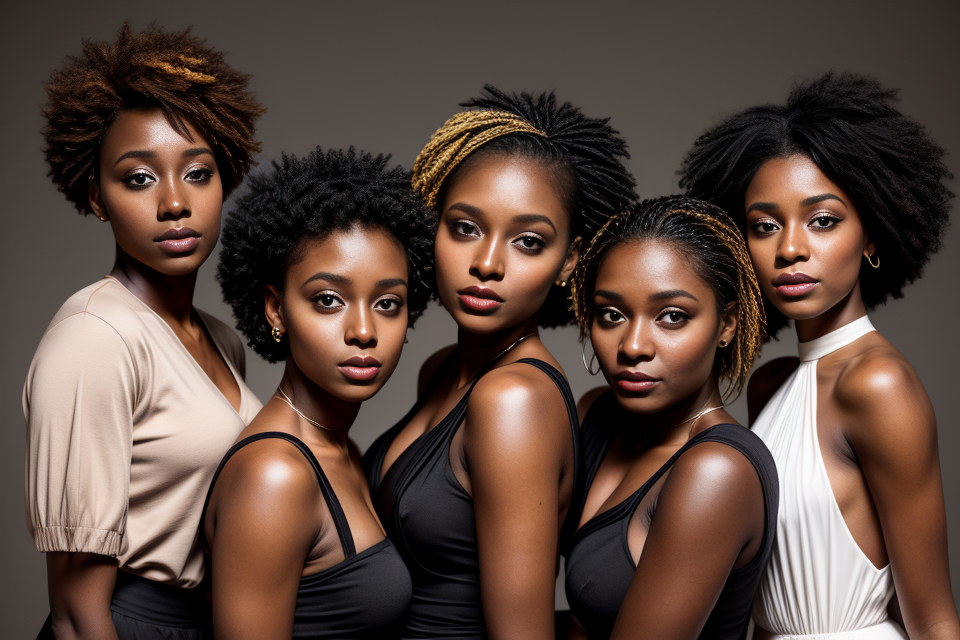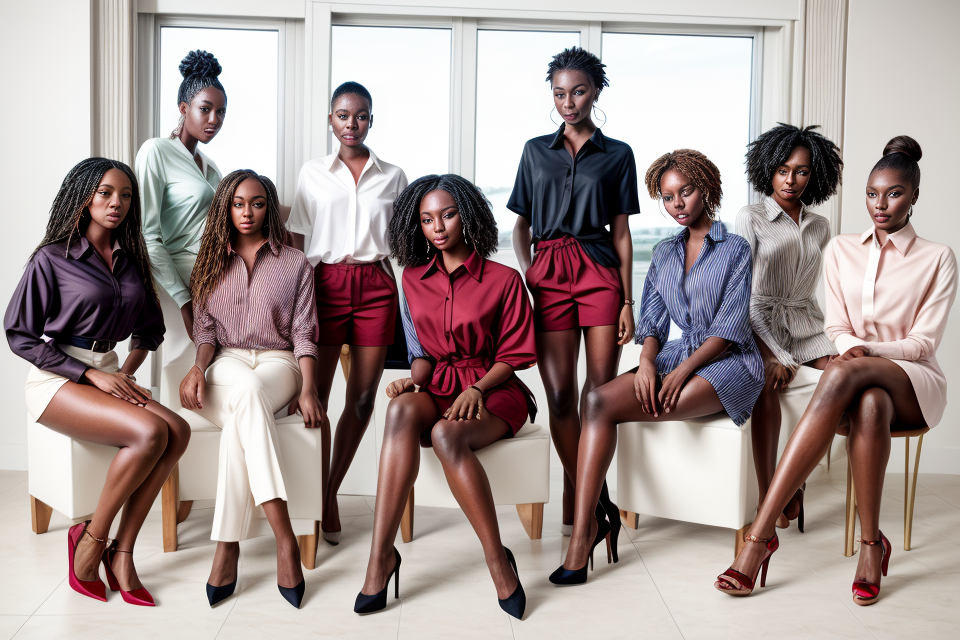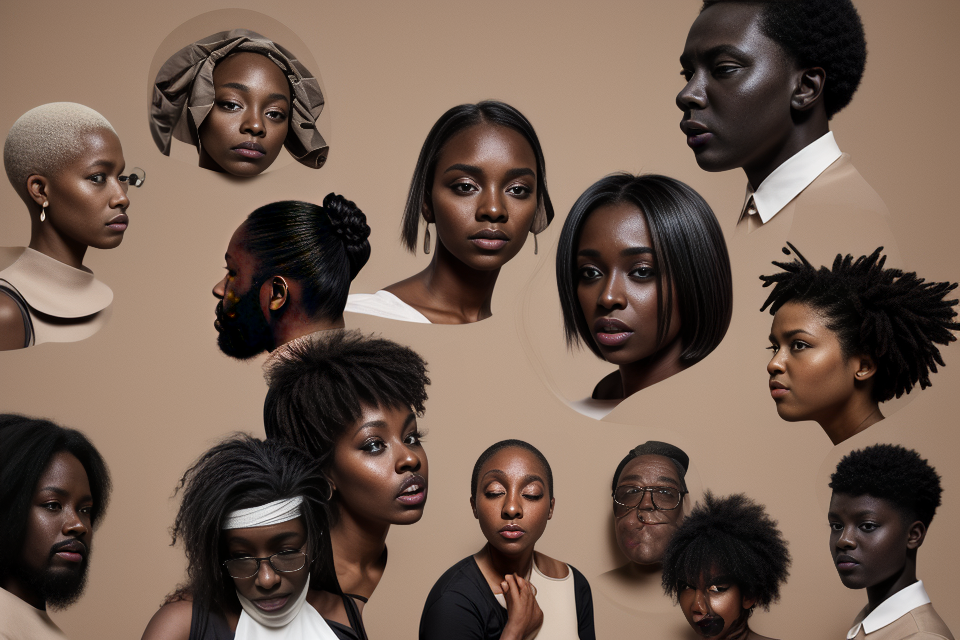Unlock the secrets to looking your best with this comprehensive guide on what colors look best on dark skin tones! Say goodbye to guessing and hello to radiant, confident beauty. Learn the ins and outs of color theory and how it applies to your unique skin tone. Discover the best hues for clothing, makeup, and accessories to flatter your complexion and make you stand out. Get ready to unleash your inner glow and elevate your style game with the power of color.
Understanding Dark Skin Tones
Characteristics of Dark Skin Tones
Dark skin tones are characterized by a higher concentration of melanin, the pigment that gives color to the skin, hair, and eyes. This pigmentation provides natural protection against the harmful effects of UV radiation from the sun.
Pigmentation and melanin
Melanin is produced by cells called melanocytes, which are found in the epidermis, the outer layer of the skin. The amount of melanin in the skin determines its color, with higher concentrations resulting in darker tones.
Undertones
Undertones refer to the color of the skin beneath the surface, and they can vary from person to person. Common undertones include yellow, pink, red, and blue.
Overtones
Overtones are the colors that are visible on the surface of the skin. They are determined by the combination of undertones and the lightness or darkness of the skin. Common overtones include gold, copper, brown, and silver.
It is important to understand these characteristics of dark skin tones in order to choose colors that will complement and enhance the natural beauty of individuals with darker skin.
Why Color Choice Matters for Dark Skin Tones
Color choice is a crucial aspect to consider when dressing for individuals with dark skin tones. The right color selection can enhance natural beauty, complement skin undertones, and build confidence. Here are some reasons why color choice matters for dark skin tones:
- Enhancing natural beauty: Dark skin tones have a unique depth and richness that can be enhanced by the right color choices. For example, deep jewel tones like emerald green and sapphire blue can bring out the richness of dark skin tones, while soft pastels like lavender and pale pink can create a delicate and elegant look.
- Complementing skin undertones: Dark skin tones have a wide range of undertones, from warm to cool. Choosing colors that complement your skin’s undertone can make you look more radiant and healthy. For example, if you have warm undertones, colors like peach, coral, and gold will complement your skin, while if you have cool undertones, colors like blue, silver, and purple will look great on you.
- Building confidence: Confidence is key when it comes to fashion, and the right color choices can help you feel more confident. For example, if you are unsure about what colors look good on you, try wearing a bold color like red or purple, which can add a pop of color to your outfit and make you stand out. Alternatively, if you prefer a more subtle approach, try incorporating a color like navy blue or charcoal gray, which can add sophistication and elegance to your look.
Popular Colors for Dark Skin Tones
Navy Blue
- Versatility: Navy blue is a versatile color that can be dressed up or down, making it a popular choice for a variety of occasions. Whether you’re dressing for a formal event or a casual day out, navy blue can be the perfect choice.
- Richness: Navy blue is a rich and sophisticated color that adds a touch of elegance to any outfit. It is often associated with luxury and is a popular choice for formal wear, such as suits and dresses.
- Sophistication: Navy blue is a sophisticated color that exudes a sense of style and class. It is often seen as a more mature and refined alternative to black, making it a popular choice for those looking to make a statement without being too bold.
Overall, navy blue is a popular choice for those with dark skin tones as it offers a range of benefits, including versatility, richness, and sophistication. Whether you’re looking for a formal or casual outfit, navy blue is a great option to consider.
Berry Tones
Berry tones are a popular choice for those with medium to deep skin tones, as they can add warmth and brightness to the complexion. These shades include burgundy, plum, and cranberry, which are all flattering on a wide range of skin tones.
One of the reasons why berry tones are so flattering is because they contain both warm and cool undertones, which can help to balance out the skin’s natural undertone. For example, a deep purple shade like burgundy can be flattering on those with cool undertones, while a lighter pinky-purple shade like cranberry can be flattering on those with warm undertones.
Berry tones can also be a great choice for those looking to add a pop of color to their outfit. For example, a pair of burgundy heels or a plum-colored clutch can add a touch of glamor to any outfit, while a cranberry-colored scarf or cardigan can add a cozy, rustic feel.
Overall, berry tones are a versatile and flattering choice for those with medium to deep skin tones, and can be worn in a variety of ways to add warmth and brightness to any outfit.
Greens and Olive Tones
Greens and olive tones are a popular choice for individuals with dark skin tones, as they complement the natural undertones of olive and dark skin. These colors can add a fresh and vibrant look to any outfit. Here are some examples of greens and olive tones that work well on dark skin tones:
- Forest Green: This rich and deep shade of green is a perfect choice for those with olive or dark skin tones. It adds a touch of sophistication and elegance to any outfit.
- Emerald: This bright and bold shade of green is a great choice for those who want to make a statement. It pairs well with neutral colors and can add a pop of color to any outfit.
- Olive: This muted shade of green is a versatile choice for those with olive or dark skin tones. It pairs well with a variety of colors and can add a touch of warmth to any outfit.
When it comes to wearing greens and olive tones, it’s important to consider the color of your eyes and hair. If you have brown eyes and hair, you can wear a wide range of greens and olive tones. However, if you have lighter eyes and hair, you may want to stick to lighter shades of green, such as mint or chartreuse. Additionally, the cut and style of your clothing can also affect how well greens and olive tones look on your skin. For example, a loose-fitting, boxy top in forest green can create a more relaxed and casual look, while a fitted, tailored blazer in emerald can create a more formal and polished look.
Jewel Tones
Jewel tones are a group of colors that are known for their richness and depth. These colors are often associated with luxury and elegance, making them an excellent choice for special occasions. Some of the most popular jewel tones for dark skin tones include sapphire, ruby, and amethyst.
Sapphire
Sapphire is a deep blue color that is known for its richness and sophistication. It is a great choice for both formal and casual settings, and it can be paired with a variety of other colors. When worn by someone with dark skin tones, sapphire can add a touch of elegance and refinement to any outfit.
Ruby
Ruby is a deep red color that is known for its richness and warmth. It is a great choice for special occasions, as it adds a touch of glamour and sophistication to any outfit. When worn by someone with dark skin tones, ruby can make the skin appear more radiant and glowing.
Amethyst
Amethyst is a deep purple color that is known for its richness and luxury. It is a great choice for formal and special occasion wear, as it adds a touch of elegance and sophistication to any outfit. When worn by someone with dark skin tones, amethyst can make the skin appear more vibrant and youthful.
Overall, jewel tones are a great choice for those with dark skin tones, as they add richness and depth to any outfit. Whether you are looking for a formal or casual look, there is a jewel tone that will work for you.
Black
Black is a classic and timeless color that is flattering for all skin tones. It is a versatile color that can be dressed up or dressed down, making it a popular choice for both formal and casual occasions. When worn by individuals with dark skin tones, black can enhance their natural beauty and give them a sense of confidence and sophistication.
One of the reasons why black is a popular choice for dark skin tones is that it is a color that is easy to pair with other colors. Whether you prefer to wear bold colors or prefer a more subtle look, black can be paired with a variety of colors to create a stunning look. Additionally, black is a color that is easy to maintain, making it a practical choice for individuals who are busy and don’t have a lot of time to spend on laundry.
Black is also a color that is flattering for individuals with dark skin tones because it is a color that can be worn year-round. Whether you prefer to wear black in the summer or the winter, it is a color that can be easily dressed up or dressed down to suit your needs. Additionally, black is a color that is easy to accessorize, making it a popular choice for individuals who enjoy adding unique touches to their outfits.
In conclusion, black is a popular choice for individuals with dark skin tones because it is a classic and timeless color that is flattering for all skin tones. It is a versatile color that can be dressed up or dressed down, making it a practical choice for individuals who are busy and don’t have a lot of time to spend on laundry. Additionally, black is a color that is easy to pair with other colors and accessorize, making it a popular choice for individuals who enjoy adding unique touches to their outfits.
Tips for Choosing Colors that Look Best on Dark Skin Tones
Know Your Undertone
Understanding your undertone is a crucial step in choosing colors that will look best on your dark skin tone. An undertone is the color that is present in your skin even when you have no makeup on. To determine your undertone, you can use a color chart or consult a professional.
Using a color chart, you can compare your skin tone to the chart’s reference colors. If your skin tone matches the warm reference color, then you have a warm undertone. If your skin tone matches the cool reference color, then you have a cool undertone. If your skin tone falls in between the two, then you have a neutral undertone.
Alternatively, you can consult a professional such as a makeup artist or a stylist. They can help you determine your undertone by analyzing your skin’s natural coloring and the colors that look best on you.
Once you know your undertone, you can look for complementary colors that will enhance your skin tone. Complementary colors are colors that are opposite each other on the color wheel. For example, if you have a warm undertone, you can choose complementary colors such as coral, peach, or apricot. If you have a cool undertone, you can choose complementary colors such as blue, green, or purple.
Experiment with Neutrals
When it comes to choosing colors that look best on dark skin tones, experimenting with neutrals is a great place to start. Neutral colors are versatile and flattering, and they can create a solid foundation for bolder colors.
Black
Black is a classic color that can never go out of style. It is a perfect color for dark skin tones as it can make the skin appear more radiant and even-toned. Black can also be paired with a variety of colors, making it a versatile choice for any occasion.
White
White is another classic color that looks great on dark skin tones. It can create a crisp and clean look, and it can make the skin appear brighter and more even-toned. White can also be paired with a variety of colors, making it a versatile choice for any occasion.
Gray
Gray is a neutral color that can be paired with a variety of colors. It can create a sophisticated and understated look, and it can make the skin appear more even-toned. Gray can also be paired with bolder colors, making it a versatile choice for any occasion.
In conclusion, experimenting with neutrals is a great way to choose colors that look best on dark skin tones. Black, white, and gray are all versatile and flattering colors that can create a solid foundation for bolder colors.
Accessorize with Bright Colors
Adding a pop of bright color to an outfit can make a significant impact. The contrast created by pairing bright colors with neutral tones can be visually stunning. For example, a bright pink or green scarf can be an excellent accessory to add a pop of color to a neutral outfit. This technique can also be used to create a cohesive monochromatic look. When choosing bright colors, it’s essential to consider the occasion and the overall tone of the outfit. Bright colors can be bold and playful, but they can also be overwhelming if not used correctly. Therefore, it’s important to strike a balance when using bright colors as accessories.
Mix and Match Skin Tone Families
When it comes to choosing colors that look best on dark skin tones, one effective strategy is to mix and match skin tone families. Here’s how:
- Dark skins look great in cool or warm colors: Dark skin tones have a warm undertone, which means they can look great in both cool and warm colors. Cool colors like blue, purple, and green can complement dark skin tones, while warm colors like red, orange, and yellow can also look great.
- Combine complementary colors for a stunning effect: Complementary colors are colors that are opposite each other on the color wheel. When you mix and match complementary colors, you can create a stunning effect that really pops. For example, a dark blue shirt paired with a bright orange scarf can create a striking look that really shows off your style.
In summary, when it comes to choosing colors that look best on dark skin tones, consider mixing and matching skin tone families and experimenting with complementary colors. With a little creativity and attention to detail, you can create looks that are both stylish and flattering.
FAQs
1. What colors look best on dark skin tones?
Answer: When it comes to choosing colors that look best on dark skin tones, the general rule of thumb is to opt for colors that are in the warm undertone family. These include shades of brown, beige, warm pink, and yellow. Avoid colors that are too cool in tone, such as pastel colors or shades of blue and purple, as they can wash out the skin and make it appear sallow.
2. Is it true that navy blue looks good on dark skin tones?
Answer: Yes, navy blue can look great on dark skin tones! This deep, rich shade is a classic color that complements the rich tones of dark skin beautifully. Navy blue can be worn in a variety of ways, from dresses and skirts to tops and pants, and it can be paired with a range of other colors, from warm pink to bright yellow.
3. Are there any colors that should be avoided for dark skin tones?
Answer: Yes, there are certain colors that should be avoided for dark skin tones. These include colors that are too light or pastel, such as pale pink, light blue, and lavender, as they can wash out the skin and make it appear sallow. Similarly, colors that are too dark or muted, such as charcoal gray and navy blue, can make the skin appear dull and lifeless. It’s best to opt for colors that are bright and vibrant, with warm undertones that complement the rich tones of dark skin.
4. How can I determine my skin undertone?
Answer: To determine your skin undertone, you can look at the veins on your wrist. If they appear green, you have a warm undertone. If they appear blue or purple, you have a cool undertone. Warm undertones look best in warm colors, such as shades of brown, beige, and warm pink, while cool undertones look best in cool colors, such as shades of blue, purple, and silver.
5. Can I wear black with dark skin tones?
Answer: Yes, black can be a great color for dark skin tones! Black is a classic color that can be worn in a variety of ways, from sleek and sophisticated to bold and playful. It’s important to note that the finish of the fabric can make a big difference in how black looks on dark skin tones. For example, matte fabrics can make the skin appear flat and dull, while shiny fabrics can make the skin appear luminous and radiant.



